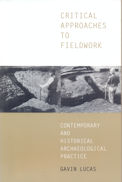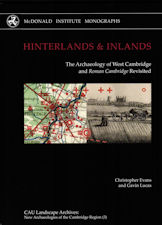In Critical Approaches to Fieldwork Gavin Lucas provides a fundamental examination of the historical and conceptual framework within which archaeology is practised today. Drawing on the development of the discipline since the nineteenth century, the relation between theoretical paradigms and everyday archaeological practice 1s critically explored.
This work takes as its starting point the rote of fieldwork and how this has changed over the past 150 years. The author argues against progressive accounts of fieldwork and instead places it in its broader intellectual context. From this, a number of key structural changes are identified in archaeological practice which correlate interestingly with the emergence of sub-divisions within the discipline, such as find specialisms, area/period research and theoretical/methodological specialities. It is argued that such structural divisions within archaeology have major theoretical consequences which need to be addressed. This work contributes greatly to this emerging discussion.
In providing a much-needed historical and critical evaluation of current practice in archaeology, this book opens up a topic of debate which affects a11 archaeologists, whatever their particular interests. This will be essential reading for all current and future archaeologists.

